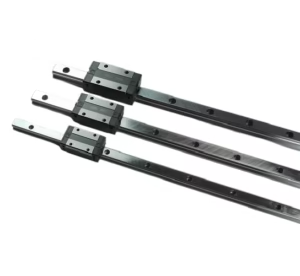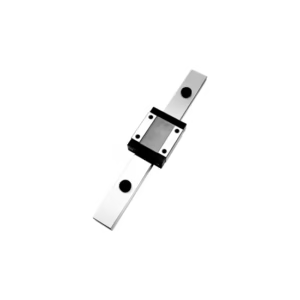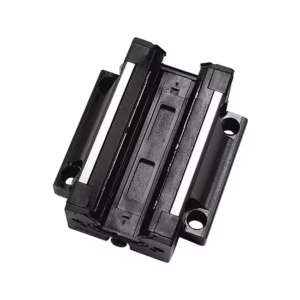Outline for Linear Ball Bearing Article
| Main Topic | Subtopics |
|---|---|
| Introduction to Linear Ball Bearing | Definition, Origin, Role in engineering |
| What is a Linear Ball Bearing? | Explanation, Core features |
| How Linear Ball Bearings Work | Structure, Mechanism, Smooth motion |
| Types of Linear Ball Bearings | Open type, Closed type, Adjustable, Self-aligning |
| Materials Used in Linear Ball Bearings | Chrome steel, Stainless steel, Polymer, Ceramic |
| Advantages of Linear Ball Bearings | Low friction, High precision, Long lifespan |
| Disadvantages of Linear Ball Bearings | Dust sensitivity, Noise, Cost |
| Design Considerations | Load capacity, Accuracy, Speed, Environment |
| Linear Ball Bearings vs. Linear Bushings | Differences, Similarities, Applications |
| Applications in Automation | Robotics, CNC machines, 3D printers |
| Industrial Applications | Packaging, Assembly, Conveyor systems |
| Medical and Scientific Applications | Imaging, Laboratory, Surgical equipment |
| Linear Ball Bearings in Transportation | Automotive testing, Aerospace, Rail systems |
| Installation of Linear Ball Bearings | Mounting steps, Alignment, Safety |
| Maintenance of Linear Ball Bearings | Lubrication, Cleaning, Inspection, Replacement |
| Common Failures and Solutions | Misalignment, Contamination, Overload |
| Cost Factors | Material, Precision level, Application |
| Innovations in Linear Ball Bearings | Self-lubrication, Smart sensors, Eco-materials |
| Linear Ball Bearings in Architecture | Elevators, Sliding doors, Automation |
| Standards and Regulations | ISO, DIN, Industry-specific |
| Case Studies | Robotics in Japan, Aerospace in USA, Healthcare in EU |
| Future of Linear Ball Bearings | AI, IoT, Nanotechnology, Sustainability |
| Linear Ball Bearing | Summary and complete overview |
| FAQs | At least 6 questions with answers |
| Conclusion | Importance and future relevance |
Introduction to Linear Ball Bearing
In the world of engineering, few components play as vital a role as the linear ball bearing. These seemingly small devices provide the foundation for smooth, precise motion in machinery. From robotic arms in factories to delicate surgical equipment, linear ball bearings are essential for accuracy, reliability, and durability.
Developed to reduce friction and ensure efficiency, they have become a cornerstone in automation, robotics, and high-tech industries. Let’s explore the world of linear ball bearings in detail—how they work, their benefits, applications, and future.
What is a Linear Ball Bearing?
A linear ball bearing is a mechanical component designed to provide smooth linear motion along a shaft with minimal resistance. It uses rows of recirculating steel balls to reduce friction and maintain accuracy.
Key features include:
- Ability to support heavy loads.
- Smooth, low-friction linear motion.
- Precision and repeatability.
They are the backbone of modern automation systems, ensuring machinery operates efficiently.
How Linear Ball Bearings Work
The mechanism is straightforward yet ingenious:
- The bearing consists of a cylindrical housing with multiple ball tracks.
- Hardened steel balls roll between the bearing and the shaft.
- These balls circulate endlessly, ensuring smooth and continuous motion.
The result? Reduced wear, higher accuracy, and longer service life.
Types of Linear Ball Bearings
Different designs exist to suit specific needs:
- Open type: Allow shafts to pass through, useful in long-travel applications.
- Closed type: Enclose the shaft, providing better load support.
- Adjustable type: Enable clearance adjustments for tight fits.
- Self-aligning type: Compensate for shaft misalignment.
Choosing the right type depends on environment, load, and precision needs.
Materials Used in Linear Ball Bearings
Material choice directly affects performance:
- Chrome steel: High strength and durability.
- Stainless steel: Corrosion resistance, ideal for medical use.
- Polymer: Lightweight and self-lubricating.
- Ceramic: Extremely durable and resistant to wear.
Engineers select materials based on application requirements.
Advantages of Linear Ball Bearings
- Low friction: Ensures energy efficiency.
- High precision: Suitable for CNC and robotics.
- Durability: Long service life with proper care.
- Flexibility: Wide range of applications.
These strengths make them indispensable in modern industry.
Disadvantages of Linear Ball Bearings
- Dust sensitivity: Contamination can damage performance.
- Noise: Some types generate vibration or noise.
- Cost: High-precision models are expensive.
Despite drawbacks, their benefits outweigh limitations.
Design Considerations
When selecting bearings, engineers must consider:
- Load type (radial or axial).
- Operating speed.
- Accuracy requirements.
- Environmental conditions (temperature, dust, humidity).
A mismatch in design can reduce efficiency and lifespan.
Linear Ball Bearings vs. Linear Bushings
- Linear ball bearings: Use recirculating balls for smooth motion.
- Linear bushings: Depend on sliding friction, often cheaper but less precise.
For high-precision industries, linear ball bearings are preferred.
Applications in Automation
Automation systems thrive on linear ball bearings:
- Robotics: Enable precise arm movement.
- CNC machines: Deliver micrometer-level accuracy.
- 3D printers: Ensure layer alignment and smooth printing.
Without them, modern automation would struggle.
Industrial Applications
Factories depend on these bearings for:
- Packaging machines: High-speed efficiency.
- Assembly lines: Precision in repetitive tasks.
- Conveyor systems: Smooth transfer of goods.
They enhance both productivity and safety.
Medical and Scientific Applications
Linear ball bearings make critical contributions in healthcare:
- Medical imaging: Smooth patient positioning.
- Laboratory equipment: Accurate and stable motion.
- Surgical robotics: Life-saving precision in operations.
Here, precision equals safety and success.
Linear Ball Bearings in Transportation
They also play a key role in:
- Automotive testing rigs.
- Aerospace assembly systems.
- Rail equipment.
Transportation industries demand reliability, and these bearings deliver.
Installation of Linear Ball Bearings
Correct installation is essential:
- Proper shaft alignment.
- Stable mounting surface.
- Pre-lubrication before use.
- Safety inspection.
Poor setup can reduce service life significantly.
Maintenance of Linear Ball Bearings
To ensure long life:
- Lubricate regularly.
- Clean to avoid dust contamination.
- Inspect for wear or misalignment.
- Replace when necessary.
Maintenance extends efficiency and reliability.
Common Failures and Solutions
- Misalignment: Reinstall and realign.
- Contamination: Clean and protect with seals.
- Overload: Use stronger materials or bigger bearings.
Most issues stem from installation or environmental neglect.
Cost Factors
Costs vary by:
- Material type (steel vs. ceramic).
- Precision level.
- Industry requirements (medical vs. industrial).
High-end models are expensive, but the long-term benefits justify the cost.
Innovations in Linear Ball Bearings
- Self-lubricating systems: Reduce maintenance.
- Smart sensors: Detect wear and predict failures.
- Eco-friendly materials: Support sustainability goals.
Future designs will be smarter, greener, and more efficient.
Linear Ball Bearings in Architecture
Applications include:
- Elevators: Smooth movement of cabins.
- Sliding doors: Stability and durability.
- Automated storage: Efficient space utilization.
Even in buildings, bearings play hidden yet vital roles.
Standards and Regulations
Industry relies on standards such as:
- ISO 10285: Linear motion rolling bearings.
- DIN 625: European standards for bearings.
- Industry-specific certifications in aerospace and medical fields.
Compliance ensures safety and reliability.
Case Studies
- Robotics in Japan: Improved factory automation efficiency by 25%.
- Aerospace in the USA: Enabled precision in satellite component assembly.
- Healthcare in Europe: Boosted accuracy in surgical robotics.
These real-world cases show their global value.
Future of Linear Ball Bearings
Expect bearings to evolve with:
- AI-driven monitoring systems.
- IoT integration for predictive maintenance.
- Nanotechnology for ultra-precision.
- Sustainable materials.
The future promises smarter and more eco-friendly designs.
Linear Ball Bearing
In short, the linear ball bearing is the cornerstone of smooth, precise motion. Its contribution spans robotics, medicine, transportation, and architecture. Despite challenges, innovation ensures it will remain essential in shaping the future of precision engineering.
FAQs
What is a linear ball bearing used for?
It enables smooth, precise linear motion in machinery and automation.
What materials are used in linear ball bearings?
Steel, stainless steel, ceramic, and polymers.
Are linear ball bearings better than bushings?
Yes, for precision and durability, though bushings are cheaper.
How do you maintain linear ball bearings?
Lubricate, clean regularly, inspect, and replace when necessary.
Where are linear ball bearings used?
Robotics, CNC machines, 3D printers, medical equipment, and aerospace.
What is the future of linear ball bearings?
Integration with AI, IoT, and eco-materials for smarter and greener applications.
Conclusion
Linear ball bearings might be small, but their impact is enormous. They enable innovation, safety, and progress across industries. As technology advances, their role will only expand, paving the way for smarter, more precise, and more sustainable engineering solutions.
Suggestions for Inbound Links
- Internal link to linear slides guide
- Internal link to guide rails explained
- Internal link to automation and robotics future




